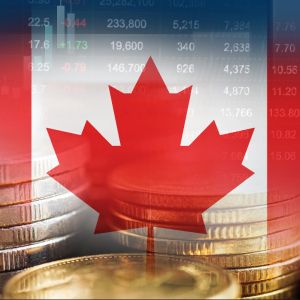Canada’s trade imbalance blew wide open in the second quarter of 2025, ballooning by C$19.84 billion to hit a record C$21.16 billion, according to Statistics Canada. That’s the largest current account deficit ever recorded. The plunge came as goods exports collapsed and foreign capital rushed out. The current account includes trade, cross-border services, investment income, and transfers, and right now, every piece is flashing red. Exports of goods fell 13.1%, the steepest quarterly drop in years, dragging total export values to the lowest since 2021. Canada’s trade deficit in physical goods also hit a record C$19.60 billion. The damage was mainly from a slump in shipments to the United States, Canada’s biggest trading partner and now its biggest problem. Trump’s tariffs hammer exports, car shipments plunge The economic hit came after U.S. President Donald Trump reimposed sweeping tariffs on Canadian goods, targeting steel, aluminum, and automobiles. That decision, announced in late Q1, began biting hard in Q2. Canadian exports to the U.S. collapsed, dragging the broader export numbers with them. Total exports shrank by 7.5%, reversing earlier gains made in Q1. The hardest fall came from international sales of passenger cars and light trucks, which tanked by almost 25%. The ripple effect hit GDP. The Canadian economy shrank 1.6% in the quarter on an annualized basis. That’s nearly three times worse than the 0.6% contraction economists were expecting in a Refinitiv poll. This followed a 2% drop in the first quarter, meaning Canada has now posted two straight quarters of contraction, meeting the textbook definition of a recession. Nathan Janzen, assistant chief economist at the Royal Bank of Canada, said the headline numbers were “obviously weaker than expected.” He blamed a “huge” drop in exports and a sharp decline in U.S. imports. “Trade-exposed sectors have weakened and business investment fell, largely as expected,” Janzen said, adding that “consumer spending was significantly firmer than expected.” Carney ditches retaliation, rate cut expectations climb Prime Minister Mark Carney, who took office in April, abandoned Canada’s retaliatory trade measures in June after months of failed talks with the Trump administration. The tariffs remain in place. Carney made the move to cool tensions, but it hasn’t improved trade flows so far. During his campaign, he had promised to make Canada the most resilient G7 economy and cut dependence on the U.S. That promise now looks shaky. The economic pressure has also shifted to the Bank of Canada. Markets are now betting on a 55% chance of a rate cut at the next policy meeting on September 17. TD Bank economist Rishi Sondhi said on Friday that “one [rate cut] taking place by year’s end is fully priced in.” The central bank has held rates steady this year, but worsening trade conditions and weak output figures may force its hand. Meanwhile, money is fleeing the country. Canada is facing record net capital outflows as investors seek stability elsewhere. That adds more pain to an already fragile balance sheet and puts more downward pressure on the loonie. Robert Asselin, chief executive of U15, a group of Canada’s top research universities, said the GDP hit should be seen as “short-term pain.” But he warned that Canada must stop relying on reactionary policy and instead invest in real capabilities. “Canada must focus on building sovereign capabilities and do much better on the industrial policy front,” Asselin said. “We have strength in advanced research but it is not aligned with industry.” Want your project in front of crypto’s top minds? Feature it in our next industry report, where data meets impact.














